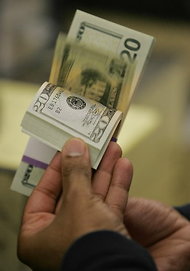 Getty Images
Getty Images
It’s that time again, when we mull what sort of holiday tip to give cleaning people, nannies, doormen, hairdressers and others who work on our behalf all year.
Last year, housekeepers were tipped most often and received the biggest tips, according to Consumer Reports’ annual holiday tipping survey. Sixty-four percent of people who use housekeepers reported tipping them, and the median, or typical, tip was $50.
But 39 percent of those surveyed said they didn’t tip any of those on the list. Some said they rewarded only exceptional service, and about a fourth said they don’t tip at all. The main reason given by the nontippers was a tight budget.
For the survey, the Consumer Reports National Research Center interviewed 2,028 adults by telephone in January. The margin of sampling error is plus or minus 2 percentage points. (Consumer Reports conducts the survey each January, when tipping is fresh in consumers’ minds, and releases results for the following holiday season.)
The survey asked about 10 different service providers, including garbage collectors and teachers. Garbage collectors were the least likely to be tipped; just 7 percent of those surveyed said they did so.
In reporting its survey results, Consumer Reports quoted Daniel Post Senning, great-great-grandson of the etiquette maven Emily Post, as saying a heartfelt “thank you” can be appreciated too. “A genuine and thoughtful thank-you goes a long way.”
Do you tip at the holidays, or do you prefer a “thoughtful thank-you?”
Article source: http://bucks.blogs.nytimes.com/2012/11/29/its-tipping-time-again/?partner=rss&emc=rss
